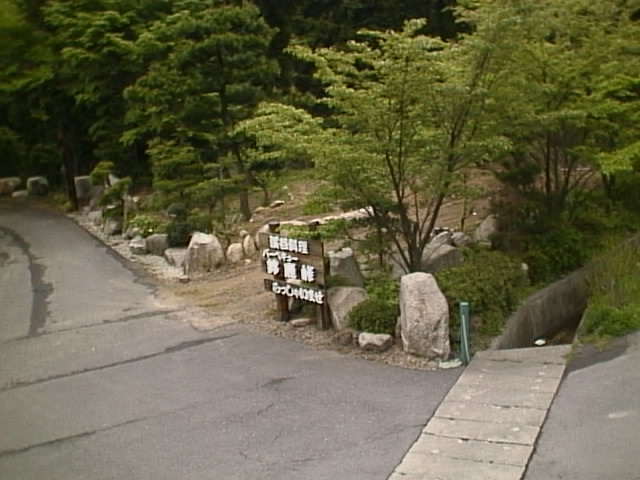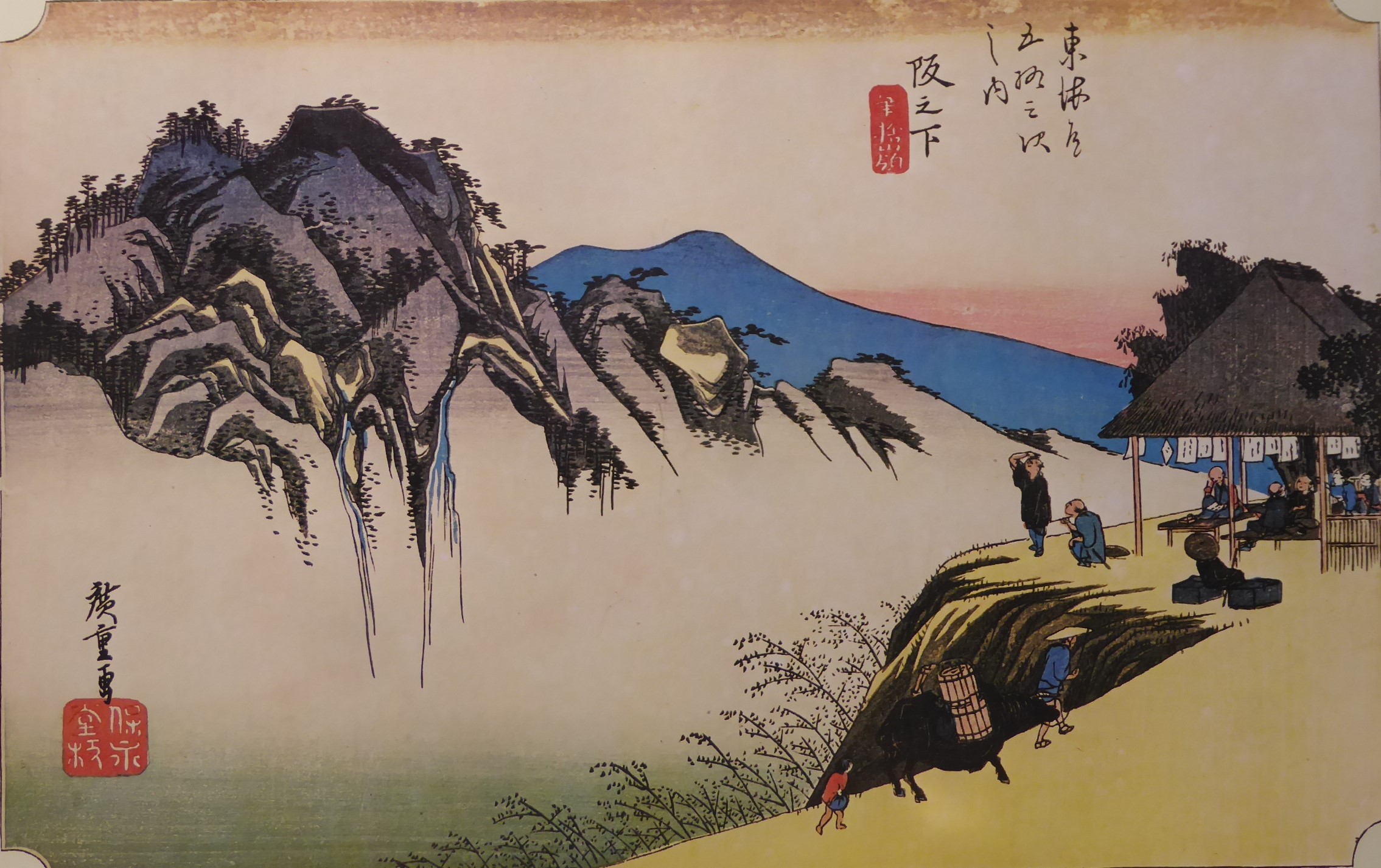Explanation of the 53 Stations of the Tokaido 49 Sakanoshita
9.8km from Tsuchiyama-juku to Sakanoshita Latitude 34 degrees 53 minutes 19 seconds north, longitude 136 degrees 21 minutes 15 seconds east
Han boarding house is the 48th post station on the 53 stations of the Tokaido.
Current address is Sakanoshita, Sekicho, Kameyama City, Mie Prefecture.
It was once a thriving post town near the difficult Suzuka Pass.
In the mid-Edo period, there were 51 inns, including 3 Honjins and 1 Wakihonjin, and 56 townscapes, 5 towns.
The area of the post station is approximately 1 km from Kawaradani Bridge to Iwaya Kannon.
It is recorded that there are about 150 houses and a population of about 500 people.
In the Suzuka Umakouta, it says, “Under the slopes, Otake and Kotake, the inn is Toritaya and Kotakeya.” .
Otakeya is the honjin of the boarding house in Osaka, and Kotakeya is the wakihonjin.
It is said that it is impossible for ordinary people to stay at Otakeya, the main shrine, but they would at least like to stay at Kotakeya, the main shrine.
It was one of the most popular inns in Tokaido, with many inns and honjin.
On the Tokaido, Suzuka Pass was feared as the second most difficult point after Hakone Pass in the east.
On September 2, 1650, the post was destroyed by a debris flow.
With support from the Shogunate, it was relocated to its current location 1.3km east.
In 1895, Kansai Railway established the current Kusatsu Line and Kansai Main Line to connect Kusatsu Station and Nagoya Station.
The steep slope of Suzuka Pass created an obstacle for steam locomotives.
Therefore, the route was changed to the west side via Tsuge.
Sakanoshita, whose local economy depended on business with travelers, declined as it was removed from the transportation hub.
Currently, a new road, National Route 1, passes through the area, but there are few private houses along the old road, and depopulation is progressing.
Only a few stone monuments at the site of the main camp indicate what was once a post town.
① “Hoeido version”
What you can see on the left side of the screen is Mt. Iwane. It is known for its strangely shaped rocks, pine trees, and waterfalls. You can see two waterfalls flowing from the mountainside.
It is said that Motonobu Kano tried to paint this mountain during the Muromachi period, but was unable to finish it and threw away his brush among the mountains, hence the name Fudesuteyama.
The gentle shape of the mountain in the distance expresses the uniqueness of Mt. Fudesute.
The Suzuka River flows in the hollow between the mountain and the highway. There are tea shops along the road, which are crowded with people looking to see the mountain.
② “Gyosho version”
It has the same composition as the Hoeido version, but is more detailed. However, the roughness of Mt. Fudezute is gone.
③ “Reisho version”
What you can see on the right side of the screen is Mt. Fudezute. The Suzuka River is flowing in the lower right.
Komuso monks and female ascetics are walking.
④ “Hokusai version”
This picture shows the inn.
The waterfall Kiyotaki Kannon'' in a boarding house in Han is famous in Hokusai's ukiyo-e prints. This is one of theShokoku Waterfall Tour”, a collection of pictures of famous places consisting of eight paintings.
⑤ “Travel images”
This is the scenery of Suzuka Pass. Currently, there is no place that has any trace of Han’s boarding house.
⑥ “Stamp image”
Currently, there are no station stamps or roadside stations, so there are no images.
“Hoeido version”
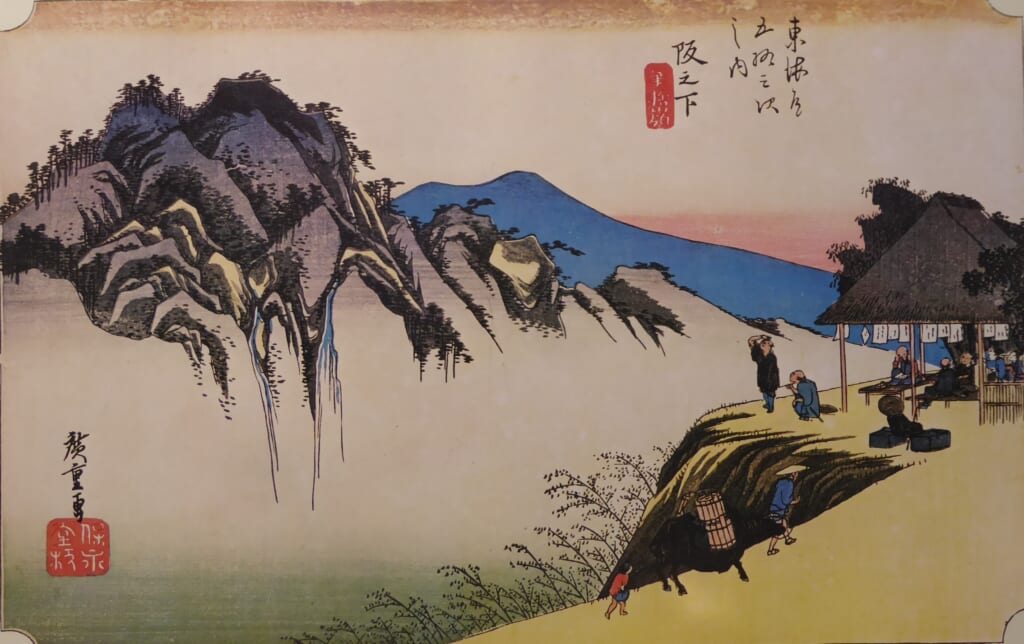
“Gyosho version”

“Reisho version”
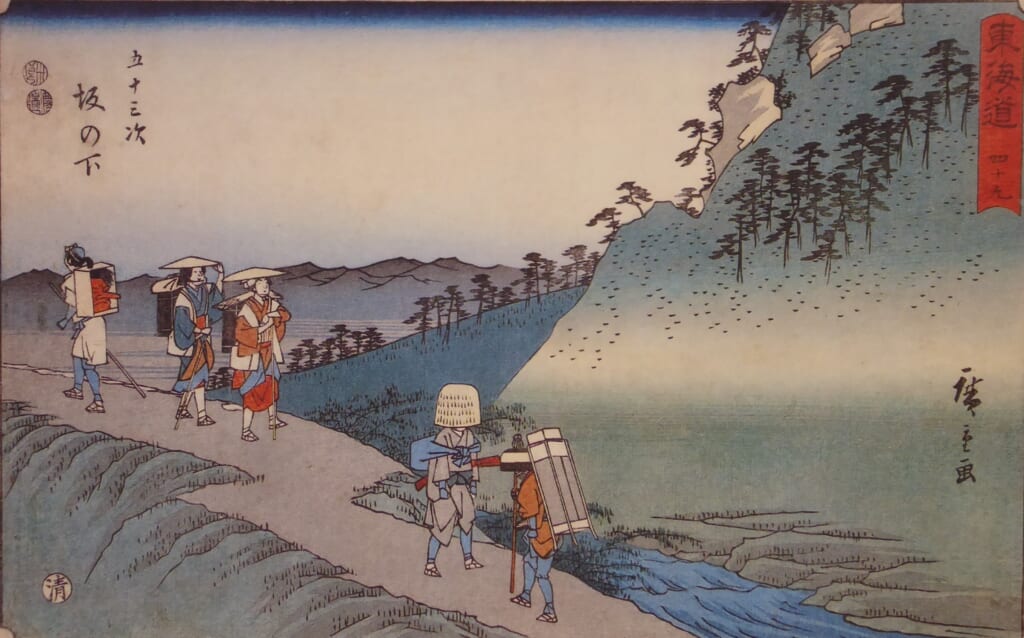
“Hokusai version”
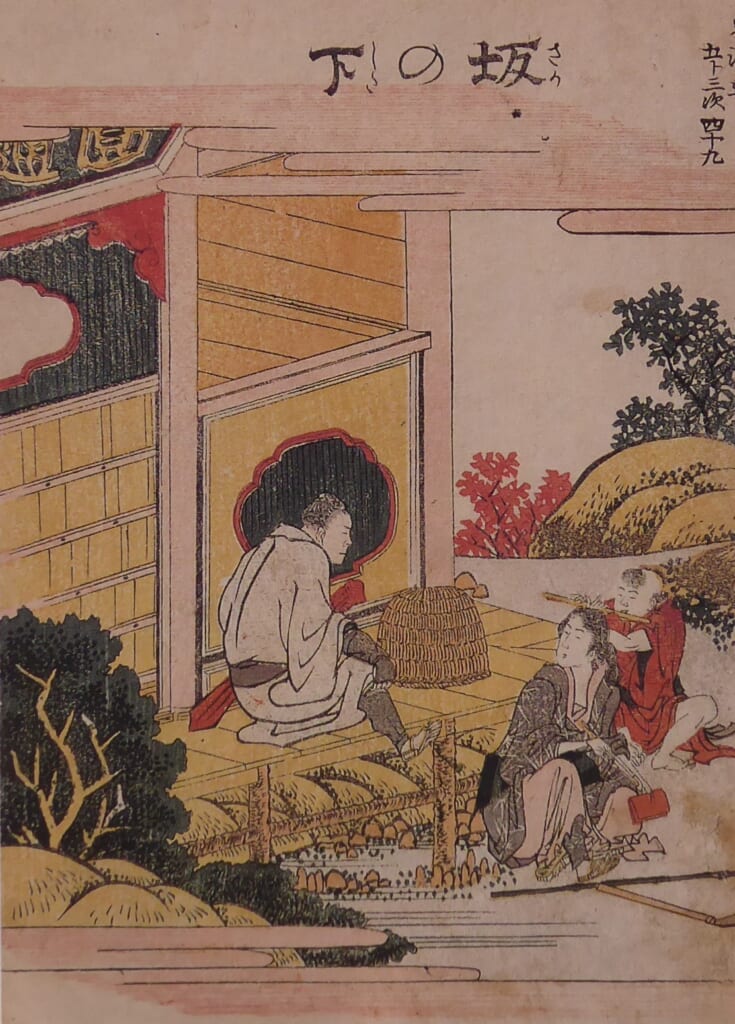
“Travel images”
